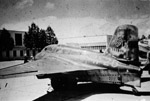
|
Concise history from Phil Butler's 'War Prizes':
AM220 Messerschmitt Me 163B W Nr 191914 (?)
Aircraft of JG 400. Surrendered at Husum and shipped to the RAE. Despatched from Farnborough to No. 6 MU, Brize Norton, on 1st August 1945. Recorded at No.6 MU in the Census of 21st March 1946 and despatched to No. 47 MU, Sealand, on 17th June. Crated at Sealand for shipment to Canada and left Salford Docks aboard the SS Manchester Commerce on 28th August 1946, arriving a Montreal on 9th September. Later stored in various locations until arriving at Rockcliffe where it is currently on display at the CNAC with the code 'Yellow 26'. There is some doubt about the correction Werknummer of this aircraft which has also been reported both as 191913 and 191914. [but that uncertainty is now resolved]
191914 was shipped to Canada together with 191095 and arrived on 9 September 1946 in Montreal. Much of the World War II German aircraft and related vehicles (such as a near complete set of V2 launch equipment) were shipped to Canada by a then-young RCAF officer and Canadian author, Farley Mowatt (information courtesy of John Hugh Boyd). The Komets were assembled at RCAF Station Rockcliffe later that month. Initially 191914 was sent to Number 10 Repair Depot at Calgary. This was a unit for third line repair and overhaul of aircraft, primarily those of the British Commonwealth Air Training Program during WW2. As Canada demobilized, these units seem to have been a place to store surplus aircraft pending their disposition. Since it seems that Canada did not experiment with the Komet, 191914 was most likely simply stored there. Possibly storage locations are Calgary and Charter (or both). In 1964 it was transferred to the Canadian War Museum.
In 2021, a photo surfaced of 191914 that finally confirmed the Werknummer. It shows the aircraft at an undetermined place and time, but with the WNr 191914 clearly readable on the left side of the vertical tail.

|
Before we look at the museum life of 191914, first an explanation of the organisation of the Canadian museum system, courtesy of John Hugh Boyd (Canada). Since 1964, all government-owned museum aircraft are owned and controled by the Canadian National Aeronautical Collection. The CNAC collection was the amalgation of the RCAF's collection, the Canadian War Museum and the National Aviation Museum. The CNAC allocates aircraft to be displayed at a number of National Museums. Most are displayed at the Canadian Aviation Museum at CFB Rockcliffe just outside Ottawa. Some are displayed at the Canadian War Museum in downtown Ottawa while others are displayed at the Canadian National Museum of Science and Technology on the outskirts of Ottawa. Others are on loan to various collections and museums throughout North America. Several are on display at the Smithsonian (NASM), as well as the Canadian Warplanes Heritage Museum in Hamilton, Ontario.
The Canadian War Museum is located in the city of Ottawa, and covers the whole range of military warfare of the last two centuries. Currently, they appear to have a limited collection of aircraft (Spitfire, Sopwith Snipe, piloted V-1).
The Komet arrived here on 15 November 1964. Its condition was described as almost entirely in original condition and required only minor restoration and refinishing. It was refinished in markings of 1. Staffel / JG400 here. This is not correct, since it was an aircraft operated by II. Gruppe / JG400.
It was transferred to the National Aviation Museum at a yet unknown date.
The National Aviation Museum of Canada is located at Rockcliffe Airport near Ottawa. It was formerly known as the Canadian National Aeronautical Collection (CNAC).
191914 was taken over from the Canadian War Museum at a yet unknown date, possibly at the same time as 191095. The museum now has two of ten surviving Komets. It is currently in storage at the NAMC (reported 1995).
The Komet is painted in a two-color upper camouflage. The tail has large mottles. The markings consist of 1. Staffel badge (Baron von Munchausen riding a cannon bullet) and 'Yellow 26' code (yellow being the wrong color for a 1st Staffel). The NAMC has some doubts about the authenticity of the paint scheme of both their Komets, and is researching the original colors. The Museum found three photographs of 191914 in their own negative collection. It appears to have been camouflages with solid colors on the fuselage and a mottled tail. The pictures are all of the right side, and no unit badge or Werknummer is visible; the latter is as expected, since it was usually only applied to the left side. The swastika seems to consist of a white outline. Some 'forensic' sanding is now being done on 191914. The photos showed a coloured nose and indeed yellow was found when a small patch was sanded. This suggests that the original colors are hidden beneath the current paint, which is very hopeful! If you can help the museum in any way, please contact them through the website shown above.
David E. Brown (of Experten Decals fame) made the following photographs in August 1997 and was kind enough to send them. It shows 191914 without wings, suggesting it either came out of storage or was to be stored.

|
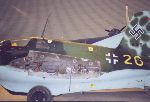
|
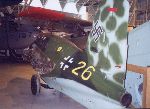
|
Vincent Kermorgant kindly supplied the following great shots of the cockpit of this Komet, made in March 2000. They show that the cockpit is very close to original and largely complete.
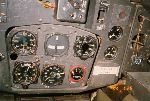
|

|
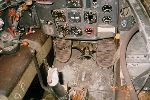
|
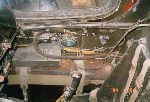
|
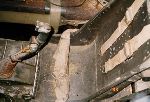
|
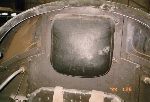
|
After having had several names, the museum was renamed 'Canada Aviation Museum' around the summer of 2000. Let's hope this name sticks. The museum also has a new website now. The site also has an on-line digital archive, that includes a fair number of Komet photos, mostly made during the restoration of the museum's Komets.
The Komet was repainted, and rolled out officially on 14 June 2001, during the museum's open house. A press release can be found on the museum's website. The original paint had remained underneath during all the years, with the possible exception of the wings (to be confirmed). The sanding of the old paint was completed, and new paint was applied, based on the colors and scheme found underneath. The Komet is back in the permanent exhibits building, underneath the wings of the museum's Lancaster.
Based on the photo report shown below, the restoration appears to have some good and bad points. On the positive side, some details are unique. An example is the wing walkway, which was not known to exist as far as I know. I saw it for the first time in this Australian photo in 2001. Also, the overall camouflage pattern should be based on 'forensic sanding' and thus should be correct. But I am very disappointed by the paint job of the tail: the mottling looks highly unrealistic. As a modeler I know how difficult it is to paint realistic looking mottles, but I find it inexcusable for a museum to deliver such a job.
A pet peeve of mine is that many museum aircraft are restored and painted too meticulously, and this Komet is no exception. Compared to wartime photos, it is way too smooth and clean. Everything fits tightly and is filled smoothly, much unlike a true end-of-the-war German aircraft. The paint job doesn't show a square millimeter of weathering, which makes it look like a model airplane. The NASM in the USA is another museum that over-restores their aircraft. After seeing the restoration work done on the NASM Arado 234, a German Ar 234 pilot remarked that if his plane would have looked so nice, the English troops would have thrown flowers at his aircraft instead of shooting at it. I really hope that museum curators will see the light one day.
Mike Dougherty from Toronto, Ontario, Canada sent the first photos showing the CAM Komet after its restoration. Included are some great detail views.

|

|
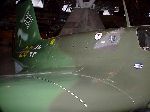
|
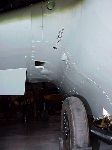
|
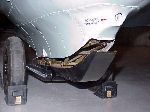
|
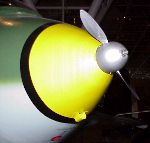
|
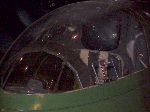
|
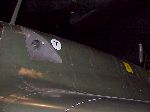
|
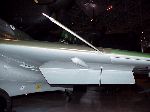
|
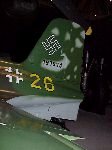
|
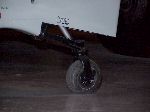
|
Doc Hopper visited the museum in May 2002, and kindly sent scans of his photographs.

|

|
Canada clearly has way too many civil servants that have nothing better to do than think of new names for the museum. The name was yet again changed in 2010, this time to 'Canada Aviation and Space Museum'.